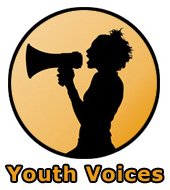The Way Sex Ed Should Be
Though I was the recipient of a helpful and informative sexuality education program, the abstinence-only elements of the curriculum were misleading and regressive.
I am proud to say that I was a recipient of a great comprehensive sex education. I came away from freshman health with the proper knowledge upon which to base my decisions about becoming sexually active, and the sense to always practice safe sex. The only real complaint I ever heard was that there should be a refresher course senior year for those of us who just recently or had yet to become sexually active.
According to literature from the Santa Barbara School district, the program is designed to encourage abstinence until marriage and include information about human sexuality, parenting and contraception, sexually transmitted diseases, and AIDS prevention. While I don’t remember much emphasis on waiting for marriage, I do remember the constant repetition that abstinence was the only 100% effective way to prevent pregnancy and STIs, but if you’re going to have sex, you MUST practice safe sex.
is designed to encourage abstinence until marriage and include information about human sexuality, parenting and contraception, sexually transmitted diseases, and AIDS prevention. While I don’t remember much emphasis on waiting for marriage, I do remember the constant repetition that abstinence was the only 100% effective way to prevent pregnancy and STIs, but if you’re going to have sex, you MUST practice safe sex.
Looking back I’m impressed at how non-judgmental and gender-neutral the experience was. Instead of leaving out queer students by defining sex as an act between a man and a woman, we learned about various sex practices and their risks using medical terms like ‘penile-anal intercourse’ and ‘oral-vaginal intercourse,’ which thankfully kept us safer than kids given an abstinence-only education who have unprotected anal sex, thinking it’s a safer choice because it’s ‘not really sex.’ We also discussed how and when to talk about sex and contraception with a partner (not while naked under the covers), and even non-intercourse options like mutual masturbation.
As part of the program we heard from various guest speakers. One young woman talked about her experience being raped, the various types of birth control, and the process of getting tested for STIs. I have to admit that while she was explaining how the speculum is used in a vaginal exam she stopped in the middle of what she was saying to tell me that it’s really not that bad, because apparently I had a look of absolute horror on my face. Two UCSB students talked to us about the dangers of mixing sex with alcohol and taught us how to put on a condom, though instead of just showing us they had a blindfolded girl try to put a condom on a banana, then went through step by step showing us what she did wrong, from the girl tearing the wrapper open with her teeth to being impaired by alcohol (hence the blindfold).
To balance these two speakers we heard from a woman who taught us about gender roles and saving ourselves for marriage. I remember being embarrassed when I learned that I apparently look at my fingernails like a boy – girls put their hands out palms down, while boys hold their hands palms up and bend their fingers to see their nails. I forget what exactly this had to do with sex… She also demonstrated the harms of having multiple sex-partners by repeatedly putting on and pulling off a piece of duct tape from a boy’s arm, showing how it stuck less each time, to teach us that each time we have sex with a new person our ability to bond with them is diminished.
At the time I took sex ed, I knew nothing about abstinence-only education and didn’t appreciate how lucky I was to receive a truly comprehensive sex education. In college I volunteered at the Sexual Health Peer Resource Center, and during our training we talked about what kind of sex ed we each had in high school, if any. I was appalled to hear what other people were told, and more importantly, not told about sex. To draw attention to this problem, Stanford Students for Choice, our Choice USA chapter, held a remedial sex ed event, and the SHPRC does educational outreaches all over campus, including many freshman dorms. This is, of course, not the answer, as about half of all students have had sex by the time they graduate high school.
With abstinence-only education proven many times over to be ineffective and even harmful as teen birth rates increase along with STI prevalence, it is essential that all teens receive a comprehensive sex education.
Remember sex-ed in high school? The young people from around the country who’ve submitted their videos to our Fresh Focus: Sex Ed Digital Video Contest do! And they have a lot to say on the subject! From artistically breath-taking to just plain hilarious, these videos tell the individual and collective stories of young people about the sexuality education they’ve had, the sex-ed they wish they’d had or the way they envision sex-ed for the future!
Starting today, each day we’ll feature one or two of the top ten video in a blogpost on our site. All you need to do is VOTE for your top THREE favorites!!
